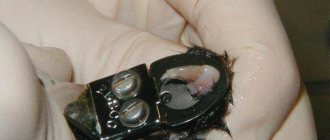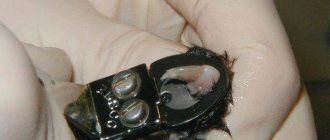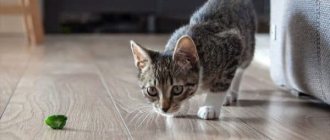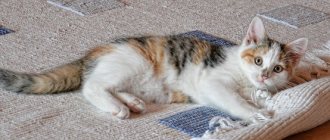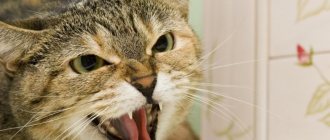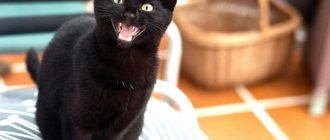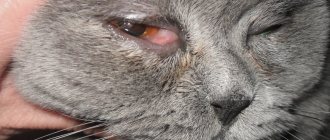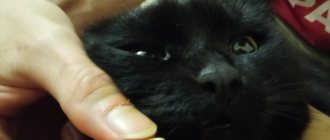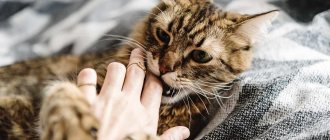In nature, a cat’s life often depends on the sharpness of its claws, because they allow them to excellently climb trees, defend themselves from predators, and defend their territory from competitors. This is why sharpening claws is a necessity .
During this process, pets renew the worn surface of their claws so that they are always in working order. In the natural environment, trees allow you to sharpen your claws, but what about your pet at home? This is where furniture and wallpaper come into play, which makes the owners worry about repairs. But it’s not difficult to cope with this situation: we have a few tips to make the cat be friends with the furniture, and you with the cat.
What does flock fabric look like?
In appearance and to the touch, flock is very similar to velor, but its cost is much lower. This soft, velvety material has many advantages. The fabric has high strength and wear resistance, is resistant to tearing and stretching, and can withstand large temperature changes. Flock has excellent water resistance.
Interesting materials:
How to properly store your bra? How to properly store medications in a pharmacy? How to properly store onions? How to properly store carrots and beets in the basement? How to properly store carrots in the cellar? How to properly store heirloom onions? How to properly store dry goods? How to properly store testosterone? How to properly store cauliflower? How to properly store peeled onions in the refrigerator?
Accustoming a cat to a scratching post
Since sharpening a cat’s claws is a necessity, it will be difficult to wean your pet off a bad habit without a scratching post . For furniture you need an alternative. The best alternative. One that your pet will like so much that he will forget the way to his favorite chair or sofa once and for all.
Choosing a scratching post
Choosing a scratching post is not an easy process. Some cats love horizontal surfaces, others vertical. How to please? Hint: your apartment . If your pet prefers to scratch wallpaper and the back of a chair, he will probably love a vertical scratching post. If a rug in the hallway or a cushion from a sofa has fallen under the attack, you should take a closer look at the horizontal one.
There are other selection criteria. While sharpening their claws, cats like to stretch well, so their pets need long or high scratching posts .
The scratching post must also be stable in order to withstand the pressure of cat paws. The flimsy design is unlikely to please the tailed ones.
The surface also plays an important role in choosing a scratching post . If it tears easily under the claws like loose fabric, rope or cardboard, your pet will appreciate it.
If you decide to make a scratching post with your own hands, do not make it from material that would resemble the carpets in your home. In this case, you give your pet a clear signal: you can fight them.
Getting used to the scratching post
The sooner you can accustom your loved one to a scratching post, the better. This is easier to do with kittens than with adult cats.
Place the scratching post next to the crime scene - a damaged sofa or chair. Ideally, let it cover the damaged surface. If this doesn’t help, move the scratcher next to the place where they sleep: after resting, cats often like to stretch and sharpen their claws.
If the cat does not pay attention to the scratching post, you can try to play with him next to him so that during the game he catches on it with his claws and leaves his scent.
You can tempt your pet with a treat by lifting it so that it has to climb onto the scratching post with its front paws.
Another option is to hang a toy on top . The pet will certainly get to it, having at the same time tried out the new scratching post.
Catnip spray will also help attract your pet . Spray the scratching post with it: the method should work.
Do not pick up the cat or run his paws over the scratching post. This may scare him away from her and reduce your chances of successful parenting. It’s better to scratch the scratching post with your hand to attract your pet. This will work better.
Create conditions
You can provide your cat with a place where she can sharpen her claws to her heart's content without causing damage to the interior - buy or make a scratching post.
It is easy to make: a board or cut of wood is tightly wrapped with natural twine. In order for the item to attract the pet's attention, it is treated with catnip.
We are engaged in education
Systematic education of the tailed dog will help keep the furniture safe and sound. As soon as you catch him committing a crime, shout or hiss loudly: cats do not like sharp sounds . It is worth repeating this technique several times to consolidate the result.
Another way to protect furniture from a cat is to spray water from a spray bottle, but we would not recommend doing this . This way you can teach your pet to be afraid of water and, if necessary, it will be difficult for you to wash him.
Don't limit yourself to negative incentives. Rewards work much better with many cats . If your pet uses a scratching post instead of furniture, reward your pet with a treat, praise or pet it.
Trimming the claws
How to protect a sofa from cat claws? The best option is to trim your nails regularly. The solution will wean your pet from tearing up furniture, though only until they grow back. But if you were unable to accustom him to a scratching post or raise a pet, there are no options.
Claws need to be trimmed with special scissors, claw cutters or guillotines (this is the name of a special tool), sold in veterinary stores. Nail scissors are not suitable for these purposes: a cat's claw is different from a human's.
If you are afraid to trim your cat's claws, you can use a grinder . This special device polishes the claw and is a safer alternative to scissors. Your favorite one should like it more.
Never undergo declawing surgery under any circumstances. It entails a large number of risks for the cat's health, including infections and chronic paw pain. Regular nail trimming is a much more humane procedure.
How to trim a cat's claws?
- First, disinfect the instrument so as not to accidentally infect your pet with an infection.
- Find a bright place so you can see the claws clearly. A wrong move can result in bleeding.
- Lock your pet . If he doesn't want to give in, you can wrap him in a blanket or towel. As an option, you can take a sleepy cat so that he doesn’t have time to figure out what’s what.
- Take the paw in your hand and press on the center of the pad so that the claw protrudes. Hold it carefully but firmly so that the cat does not interfere with the process at the most crucial moment.
- Look closely . You should see blood vessels that give it a reddish hue. It is very important not to touch them while cutting!
- Step back 2 mm from the place where the vessels end. Hold the scissors perpendicular to the claw.
- Cut, file with a nail file and repeat the same with the other claws.
- After grooming, praise your pet and give him a treat .
If you accidentally touch a blood vessel, immediately treat the area with peroxide. She better stock up in advance.
Pet training
It is important to understand that if a cat does not have suitable surfaces for sharpening her nails, she will most likely find many unsuitable ones.
For example, a sofa, bed, curtains, carpet, chairs and all other things that you can dig your claws into.
The first thing the owner should consider is that it is important to take the initiative to help the cat sharpen its claws only in those places where it is permissible.
Purchasing cat furniture
First of all, you should provide your pet with scratching posts and pads. It is important to understand here that when it comes to cats, one scratching post is unlikely to be enough.
There are several things to consider in order to provide your pet with a suitable replacement for home furniture:
- Form . This does not mean the shape of pillows or scratching posts in the form of funny birds, mice, etc. The fact is that the cat needs not only scratching posts that are located vertically, she also needs flat (horizontal) and even diagonal scratching posts.
- The material and angle of the scratching post can be important to cats, so be sure to give her the opportunity to choose.
- Size . This is especially important for vertical scratching posts and tower houses. In order for a cat to actually use them to grind down her claws, any posts or towers must be tall enough to allow the cat to stretch out to its full height.
- Surface . It is also important to provide your cat with a variety of scratching post surfaces. They cause different tactile sensations in tailed animals. Not only can individual cats have preferences (some quite strong), but they are also big fans of variety when it comes to scratching surfaces. Sisal ropes, various types of fabric, cardboard and even open wood are considered good surfaces for many cats.
- Stability . Unstable structures are dangerous for cats. Not only is an unstable scratching post or cat tower likely to fall and injure your pet or someone else, but a cat is also much less likely to use a flimsy post or tower. It is imperative to ensure that the cat tower is stable and durable and that the wall scratching surfaces are securely attached.
Many owners simply do not have enough scratching posts in their home simply because many of them cannot boast of an attractive appearance.
But it doesn’t have to be this way; in fact, manufacturers offer a variety of beautiful, high-end and stylish cat scratching posts. It is quite possible to choose several that will fit even into the most original or minimalist home interior.
Choose durable upholstery
Materials such as satin and leather, both natural and artificial, especially suffer from the effects of cat claws.
If there is a pet in the house, it is better to choose special anti-vandal fabrics for upholstery. Sharp claws will cause the least damage to flock, a fairly dense and slippery material.
Why do cats tear up furniture?
First of all, it must be said that the desire to sharpen claws is determined by physiological characteristics, regardless of what breed the pet has. Itching appears in the pads of the limbs, which causes animals to scratch their claws. The unpleasant sensation is associated with replacing the old plate with a new one. At the same time, owners may often notice that burrs appear on the pads, which also cause inconvenience to the cat.
An equally common reason is the fight for territory. Sweat glands are located on the limbs, which, when in contact with surfaces, leave a pet's aroma. In addition, when sharpening claws, all muscle groups are involved, thus keeping cats in good shape. An animal can also tear up furniture in order to get rid of stress. Sharpening claws is also an excellent option for attracting the owner's attention.
We buy anti-vandal covers and linings
Replaceable anti-vandal covers will help protect the sofa from cat claws. They are sold in many online stores. A number of models cover only part of the sofa, and some completely. The disadvantage of cases is that not all of them look presentable, but the advantages are obvious.
This is what a vandal-proof case with protection from cats looks like
In addition to sofas, there are also special pads. They are attached to the cat’s favorite parts of the sofa and help save them from further attacks.
In some furniture stores you can order interior elements made from special fabrics that are protected from cat claws. In this case, the appearance of the furniture will coincide with your tastes.
We use repellent sprays
The easiest way to protect furniture from cats is to use repellent spray. These are sold at any veterinary store. As a rule, they contain odors that cats do not like at all. Spray the spray near the furniture, and the cat is unlikely to visit this place in the near future.
Citrus fruits will also help protect your sofa from cat claws: cats don’t like their smell. To make a homemade repellent spray, take water and squeeze a lemon or orange . Then, spray the surface next to the furniture or the furniture itself, if the material allows, with water. Alternatively, you can use citrus peels instead of water. Place it around the damaged furniture, this move should work!
Unfortunately, even veterinary sprays can wear off quickly, so they should be renewed.
We use covers for claws
Now on Aliexpress they sell some multi-colored attachments that you can simply put on your claws. This method is expensive: you will need to change the covers once a week, not forgetting about the cat’s manicure.
“Anti-scratch” device - special caps that fit on claws and prevent scratching and tearing furniture
Cover the damaged surface with material that is unpleasant for the cat.
Transparent covers will save the sofa from claws.
If a cat scratches the furniture, it means she likes the upholstery. Then the best way to save a sofa or chair from claws is to cover the damaged surface with a material that your pet definitely won’t like. These include foil, double-sided tape, and sandpaper .
If you don’t have time for inventions, you can buy special adhesive tape with scratch protection. or use special transparent overlays . The cat is unlikely to like them, and the material will be strong enough to protect the furniture from any attack.

